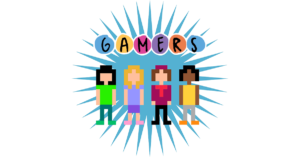TANTRUMS. HOW TO DEAL WITH THEM
“Tantrums are a loss of control in our emotions when we get frustrated”
We can distinguish various types of tantrums in our children:
- The expected and avoidable ones, which we can improve by anticipating them. These ones are related to hunger, sleep or the interruptions in the kid’s schedule or rhythms.
- The expected but not avoidable ones, that are related to its security, health or limits and rules of our house.
- Last but not least, the imposible to manage ones which just happen by the necessity of tension relief in specific moments of the daily life.
Some tips to make tantrums more manageable
- Foresee them. As parents we know the highly risk moments along the day. Always remember to carry with you the backpack of “super mommy or super daddy” with everything you need for an emergency: food, drinks, toys… for the moments in which you are not at home or the ones which break the routine.
- Avoid breaking the schedule too much. Kids have a different rhythm: they eat earlier, need more rest and they need to stay in quiet places. As parents, sometimes, it’s difficult to organize the schedules, but it works!
- Help your children to time a schedule appropiate for their age. Make a big calendar with colors and photos or drawings illustrating the activities planned for the week, this way they will recognize them in a visual manner which can help to relax and situate (breakfast, games, story time, lunch, nap time, walks, supper, bath time…). We can prevent a tantrum if we talk about the schedule in a proper language. For example, “remember that after the shower we have some game time, see. If we shower quick, we’ll have more game time” this way we focus on what’s after a “risk moment” like shower time.
- Fomment their autonomy. Kids sometimes get frustrated because they want to do things alone. Get dressed, set the table, clean the house or tidy up themselves can be chores that teach them responsability and help them to feel useful. These actions can turn into a game for them if we organize the space in an adecuate way. For example: we can put their clothes and shoes on the lower part of the wardrove for them to choose what they want to wear. We can do the same in the bathroom, using some adaptive material like stairs or putting the bath stuff at their height. We can use the same techniques for setting the table, organizing the necessary items in the lowest drawers of the kitchen.
- Set boundaries in a positive manner with suitable communication strategies. It’s useful to create some rules which are as concrete and clear as possible, and we have to make use of them immediately. These rules have to be written for every member of the family in a positive way. Not only the children. “In this house, everyone has to be treated kindly, for that reason we respect the speaking time and we talk with respect and no insluts or screams”.
- Allow the release of the adrenaline collected in the daily life tension. In this case, we can only take care of them during the tantrum, hug them and make sure that they don’t get hurt. We should talk with them afterward.
- “The secret time” looks for quality moments. When they see that “secret time” is written on their poster (even though they don’t know how to read) they know that is an exclusive moment with mom or dad, without phones or distractions. It’s the exclusive time for loving care and talk about the positive things of the day. With the collection of these moments (that doesn’t need to be too long but qualitative), they feel satisfied and stop trying to get their parent’s attention.
- Dealing with adult tantrums as a parent. There are moments in which we could feel overwhelmed and we have to take a deep breath and manage our own frustration. It normally helps to not feel guilty if we don’t do everything perfectly. We are parents and we are also learning.
- Name the emotions. It is important to tell our kids how we feel about a specific behaviour and it is also important to know how to listen and empathize with the children’s emotions. “I feel angry when I see that you haven’t tidy up your room”. “I understand that you are tired, you have done a lot of things today, but I would like you to help me”, “I comprehend that you are angry, it must be difficult to deal with that, but…”.
- Validate their feelings. Avoid commenting “that’s nothing, just some childish nonsense”. It’s important to put their feelings into words in a healthy way.
- Focus on the positive. Relativize. Reinforce the positive behaviours that they had along the day and that you want to develop.
- Avoid turning it into a battle “let’s see who wins”
Bibliography:
- “Cómo hablar para que los hijos escuchen y cómo escuchar para que los hijos hablen” A. Farber. Ed. Medici, 1997.“Padres liberados, hijos liberados”. A. Faber. ED. Medici.
- “Padres eficaces y técnicamente preparados” T.Gordon. Ed. Diana. 1997
- “Comunicación no violenta”. MB Rosemberg. Ed. Urano. 1999
- “Las frases que harán grandes a sus hijos”. Jaime Delgado Orea. Plataforma Editorial, Mayo 2014
- Calendar/Visual agenda for kids and families. Useful examples on Pinterest.




